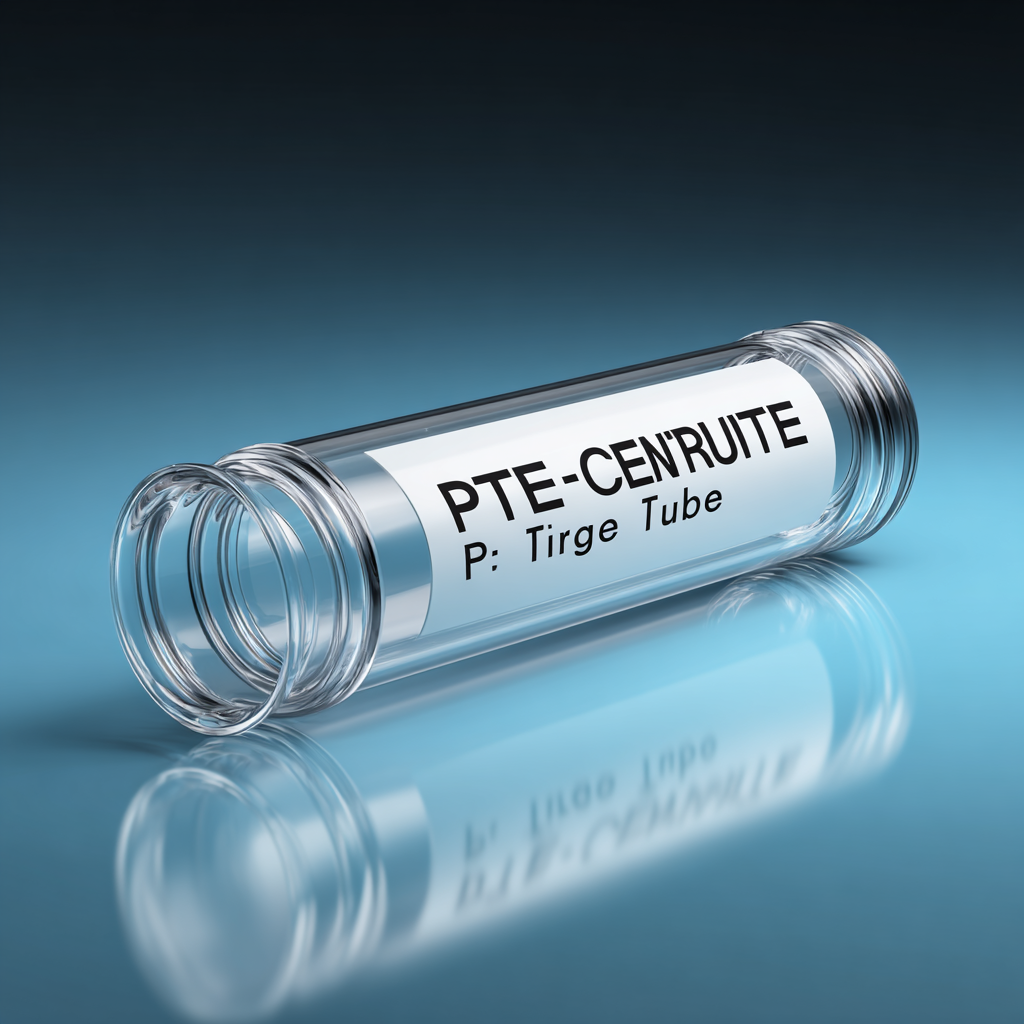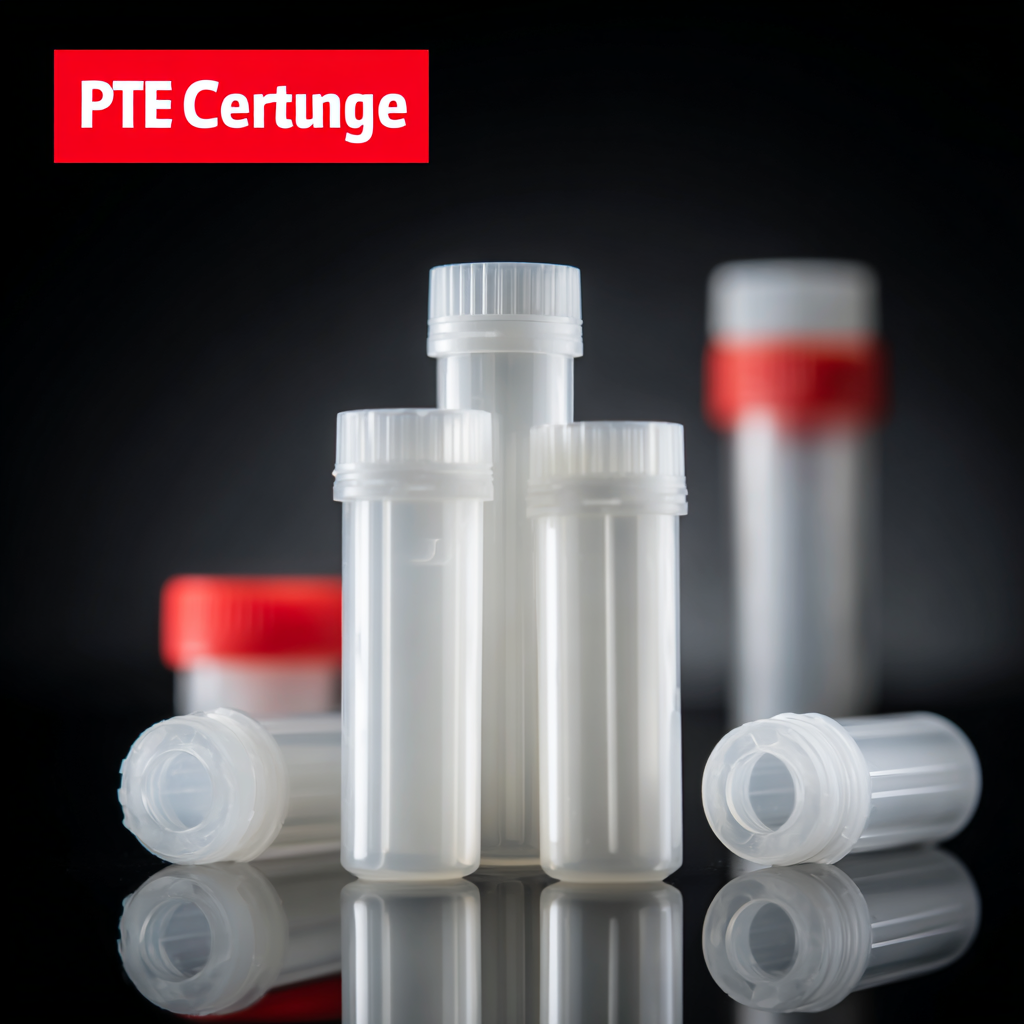As laboratories increasingly seek to enhance efficiency and precision in their experiments, the selection of specialized tools becomes paramount. Among these tools, the Ptfe Centrifuge Tube is gaining significant traction due to its exceptional chemical resistance and thermal stability, making it an indispensable asset for various applications.

According to a recent market analysis by Technavio, the global laboratory equipment market is projected to grow by over 5% annually through 2025, driven in part by advancements in materials like PTFE (Polytetrafluoroethylene), which enhance the performance and reliability of laboratory processes.
With a myriad of options available, choosing the right Ptfe Centrifuge Tube tailored to your laboratory needs can significantly impact experimental outcomes, ensuring accuracy and safety while minimizing contamination risks. This blog will guide you through the key aspects to consider when selecting the best Ptfe Centrifuge Tube for your specific applications.
When selecting PTFE centrifuge tubes for laboratory applications, understanding their key properties is essential. PTFE, or polytetrafluoroethylene, is known for its exceptional chemical resistance, making it ideal for handling aggressive solvents and acids. This property not only reduces the risk of contamination but also prolongs the life of the tubes under harsh conditions. Additionally, PTFE is highly non-stick, which facilitates the easy recovery of samples without residue interference, ensuring the accuracy of your results.

The applications of PTFE centrifuge tubes are diverse and highly effective. These tubes are commonly used in biological, chemical, and environmental laboratories due to their ability to withstand extreme temperatures and pressures. They are particularly beneficial in applications involving immunology, cell culture, and protein isolation where sample integrity is critical. Their compatibility with various centrifugation speeds enhances their utility, allowing researchers to choose the right tube for specific protocols without compromising on performance. Thus, selecting the appropriate PTFE centrifuge tube tailored to your specific laboratory needs plays a crucial role in achieving reliable and reproducible results.
When selecting PTFE centrifuge tubes for laboratory use, evaluating the quality standards of these products is crucial, particularly in the context of their resistance to gap and void formation during processing. High-quality PTFE tubes are essential for ensuring reliable experimental results and preventing contamination.
Structural integrity is fundamental; thus, look for tubes that meet industry specifications and undergo rigorous testing to guarantee consistency and durability.
Tips for assessing PTFE tube quality include checking certifications and compliance with laboratory standards. Additionally, examine the manufacturing process; reputable suppliers often provide details about their quality assurance measures. It’s also wise to consider the supplier's track record in the field—reviews and testimonials can offer insights into product reliability and performance under various laboratory conditions.
Furthermore, when using PTFE centrifuge tubes, ensure proper handling to minimize the risk of gaps or voids that could compromise your experiments. Regularly inspect tubes for signs of wear and tear, and always adhere to recommended storage and usage guidelines.
This diligence will contribute to the overall performance and stability of your laboratory setups.
When selecting PTFE centrifuge tubes for a budget-conscious lab, it's essential to strike the right balance between cost and performance. While high-quality PTFE tubes can be more expensive, they often provide superior chemical resistance and durability that can ultimately save money in the long run. Cheaper tubes may seem attractive initially, but they could lead to contamination risks or faster degradation, necessitating more frequent replacements.
Tip: Consider your laboratory's specific needs. If you're working with aggressive chemicals or require sterile conditions, investing in higher-end PTFE tubes is advisable. Look for products with robust performance metrics to ensure that you're not sacrificing quality for cost.
Additionally, evaluate the supplier's reputation and product warranties. A reliable manufacturer often stands behind their products with comprehensive guarantees, which can offer peace of mind for budget-conscious labs. It's worth investing time in comparing different brands and their customer feedback to ensure you're getting the best product for your money.
Tip: Keep an eye out for bulk purchasing options or sales events that can minimize costs without compromising on the quality of the PTFE centrifuge tubes you choose. By planning ahead, you can ensure that your laboratory remains both financially prudent and equipped with the necessary tools for successful experiments.
When selecting PTFE centrifuge tubes for laboratory applications, one of the most critical factors to consider is their chemical resistance. PTFE, or polytetrafluoroethylene, is renowned for its outstanding ability to withstand harsh chemicals, making it an ideal choice for environments dealing with solvents, acids, and bases. Laboratories often handle a variety of reactive substances, and the integrity of the centrifuge tube must remain uncompromised to ensure accurate results and safety. Choosing PTFE tubes not only safeguards against potential chemical reactions but also prolongs the lifespan of your equipment.

In addition to chemical resistance, it's essential to assess the specific requirements of your experiments. Not all PTFE centrifuge tubes are created equal; variations in thickness, size, and closure design can significantly impact their performance. For example, if your research involves high-speed centrifugation, opting for tubes specifically designed to handle increased stress is crucial. Furthermore, ensure that the tubes are compatible with the samples you are working with to prevent any unintended interactions that could affect your results. In summary, selecting the right PTFE centrifuge tube involves a careful evaluation of chemical compatibility and the unique demands of your laboratory work.
The growing demand for durable PTFE centrifuge solutions is a significant trend observed across various laboratory settings. As industries increasingly prioritize longevity and reliability in their equipment, the PTFE centrifuge tube market is being influenced by broader shifts in related sectors. According to recent market insights, the diaphragm pumps market is projected to reach approximately USD 10,799.8 million by 2035, reflecting a robust growth trajectory driven by the necessity for high-quality, durable materials and components. This trend indicates a rising expectation for laboratory tools that can withstand rigorous use while maintaining performance integrity.
Simultaneously, the mechanical seals market is also on an upward trend, with forecasts suggesting consistent growth up to 2035. This aligns well with the demand for PTFE products, known for their chemical resistance and durability. Laboratories are recognizing the importance of selecting equipment that not only meets current operational needs but is also capable of adapting to future advancements in technology and materials. Selecting the right PTFE centrifuge tubes becomes critical, as these components ensure precision, efficiency, and ultimately, the reliability of laboratory results in an increasingly demanding environment.
This bar chart illustrates the increasing demand for durable PTFE centrifuge tubes in various laboratory applications from 2020 to 2023. The data reflects the growing preference for PTFE over traditional materials due to its chemical resistance and durability.
